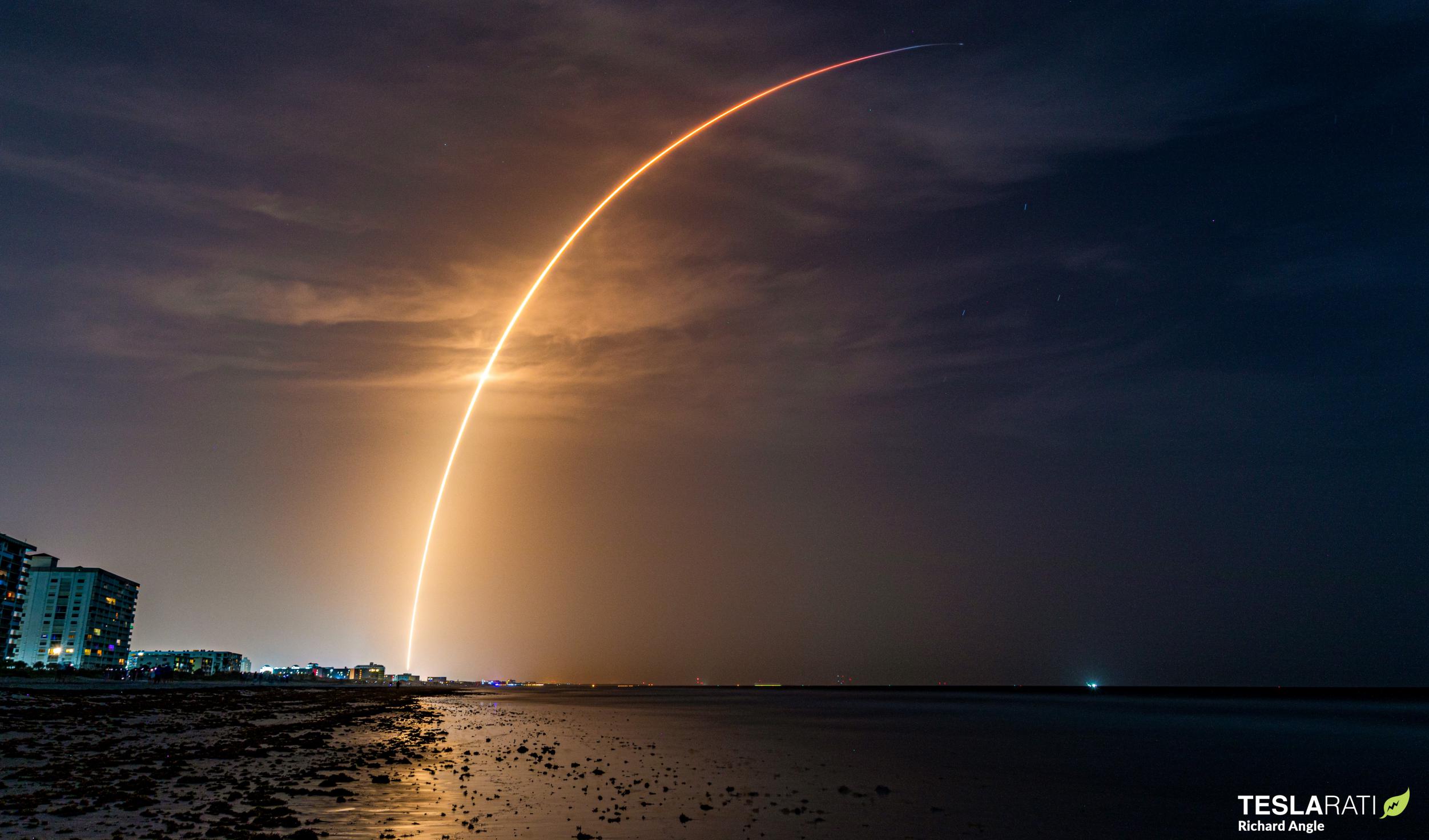
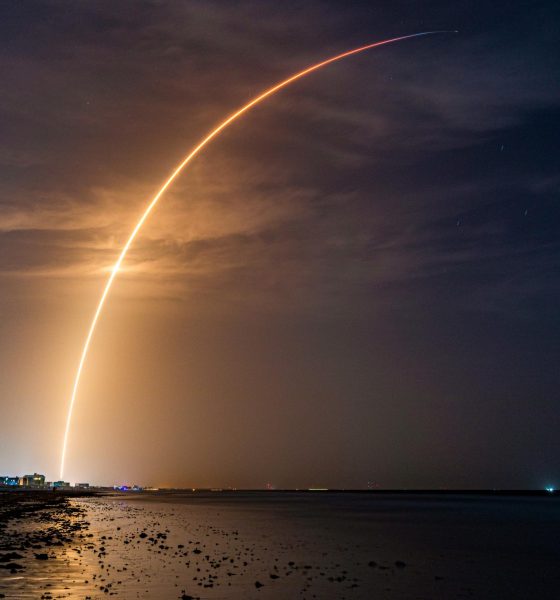
News
SpaceX launches 3000th Starlink satellite
SpaceX has successfully launched its 3000th Starlink satellite as part of Falcon 9’s 54th dedicated mission for the low Earth orbit (LEO) internet constellation.
After high upper-level winds forced SpaceX to call off a launch attempt three hours prior, Falcon 9 lifted off from NASA Kennedy Space Center (KSC) Launch Complex 39A at 10:14 pm EDT (02:14 UTC), carrying another 52 new Starlink V1.5 satellites inside the rocket’s flight-proven payload fairing. Like the fairing halves, both of which had already supported two orbital-class launches, the Falcon 9 booster (B1073) SpaceX assigned to the mission was also flying for the third time.
For the most part, Falcon 9 performed nominally. The booster lifted an expendable upper stage and the enclosed payload most of the way out of Earth’s atmosphere before separating and heading back to Earth. Falcon 9’s upper stage was as perfect as ever, boosting the Starlink stack the rest of the way into a low and elliptical parking orbit, where it eventually spun itself end over end and deployed all 52 satellites at once.
Falcon 9 booster B1073 made it through its reentry and landing burns without issue and safely touched down on drone ship A Shortfall Of Gravitas (ASOG) about nine minutes after liftoff. While that landing was ultimately a success, B1073’s accuracy was not exactly flawless and the booster came to a halt with two of its four legs unusually close to the edge of the drone ship’s deck. Had the booster missed the bullseye by just 5-10 more feet, it could have easily landed with one or two feet off the deck and tipped into the Atlantic.
Nonetheless, the landing was successful and SpaceX should have no issue recovering the booster. In any other context, it would barely be worth noting, but flawless Starlink launches with near-bullseye landings have become such a frequent and routine occurrence that any departure from that norm has become interesting.
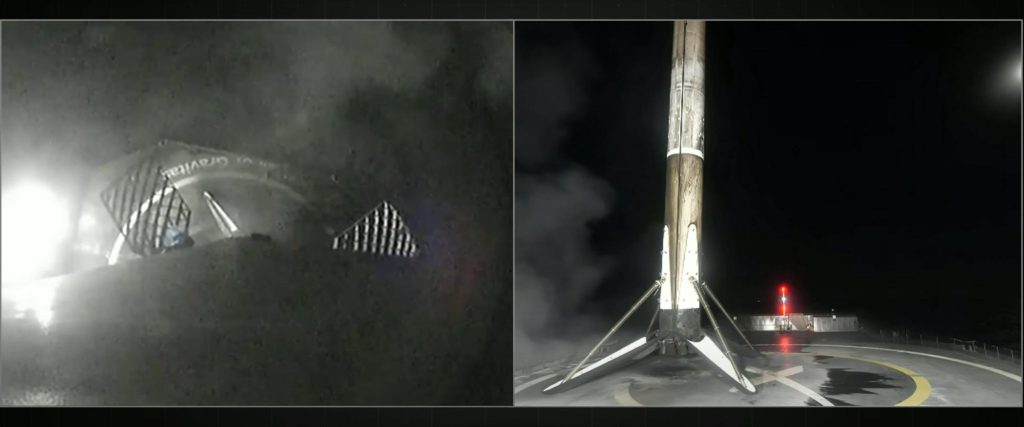
Starlink 4-26 (referring to the 26th batch of Group or Shell 4 satellites) was SpaceX’s 54th dedicated Starlink launch overall and 21st Starlink launch in 2022 alone. The mission also carried SpaceX’s 3000th Starlink satellite into orbit, a milestone so far removed from the next largest satellite constellation that it’s now more reasonable to compare Starlink to every other satellite currently in orbit. Of the 3009 Starlink satellites SpaceX has now successfully launched since 2018, 2750 are still in orbit. Assuming all 52 Starlink 4-26 satellites are healthy, astrophysicist and space object tracker Jonathan McDowell estimates that SpaceX has 2714 working satellites in orbit.
Excluding 75 prototype satellites launched over the years, all but 5 of which have since deorbited, 92.3% of all operational Starlink satellites launched by SpaceX since November 2019 are still working in orbit. While Starlink V1.0’s 7.7% satellite failure rate is far from desirable, SpaceX has made clear progress with its V1.5 design, which began launching in September 2021. Excluding 38 satellites that were lost when a solar storm caused Earth’s atmosphere to expand, unexpectedly increasing drag to uncontrollable levels, only 10 of the 1218 Starlink V1.5 satellites SpaceX has launched have failed and prematurely reentered for technical reasons – a failure rate of 0.9%.
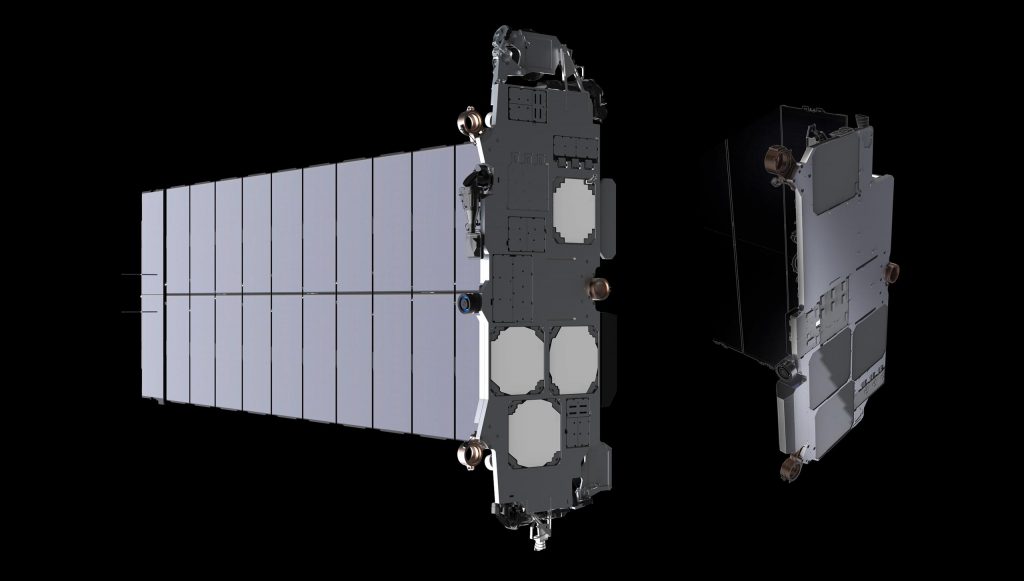
If SpaceX’s V1.5 satellites continue to demonstrate excellent reliability as they reach ages similar to their V1.0 predecessors, it will bode well for the sustainability and predictability of current and future Starlink constellations. Meanwhile, the roughly 2270 Starlink satellites that are currently operational continue to deliver internet services to hundreds of thousands of customers in countries around the world, improving the lives of countless people.
According to Next Spaceflight, SpaceX has up to five more Starlink launches scheduled this month as it continues to relentlessly pursue a record-breaking launch cadence with its Falcon 9 rocket. Up next, Starlink 3-3 could launch from California as early as August 12th. Photographer Ben Cooper reports that another East Coast Starlink mission is working towards a “mid-August” launch soon after.

News
Tesla Full Self-Driving warrants huge switch-up on essential company strategy
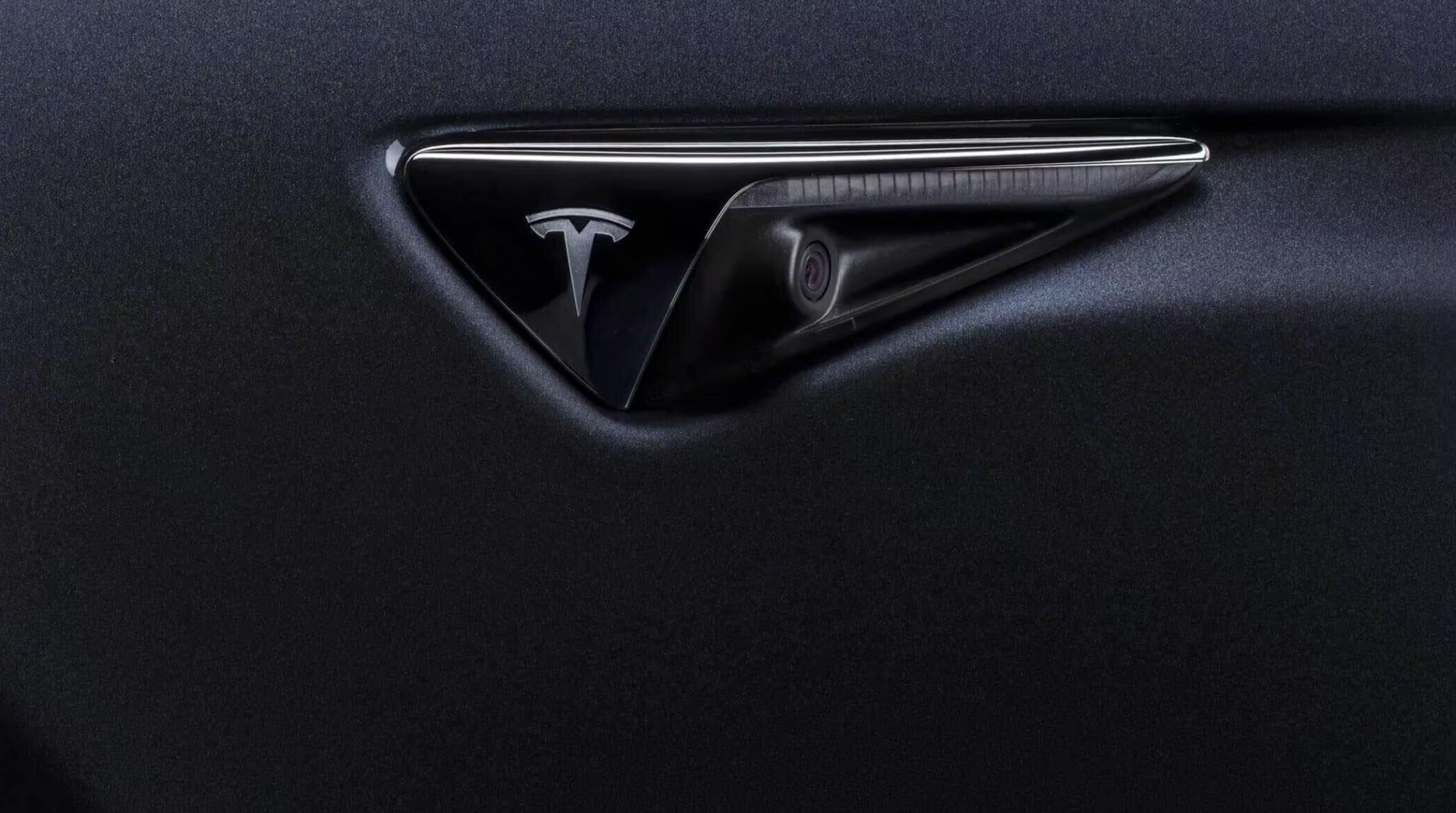
Tesla Full Self-Driving has warranted a huge switch-up on an essential company strategy as the automaker is hoping to increase the take rate of the ADAS suite.
Unlike other automotive companies, Tesla has long been an outlier, as it has famously ditched a traditional advertising strategy in favor of organic buzz, natural word-of-mouth through its production innovation, and utilizing CEO Elon Musk’s huge social media presence to push its products.
Tesla has taken the money that it would normally spend on advertising and utilized it for R&D purposes. For a long time, it yielded great results, and ironically, Tesla saw benefits from other EV makers running ads.
Tesla counters jab at lack of advertising with perfect response
However, in recent years, Tesla has decided to adjust this strategy, showing a need to expand beyond its core enthusiast base, which is large, but does not span over millions and millions as it would need to fend off global EV competitors, which have become more well-rounded and a better threat to the company.
In 2024 and 2025, Tesla started utilizing ads to spread knowledge about its products. This is continuing, as Full Self-Driving ads are now being spotted on social media platforms, most notably, X, which is owned by Musk:
NEWS: Tesla is running paid advertisements on X about FSD (Supervised). Here’s an ad they started running yesterday: pic.twitter.com/IHVywLMyTd
— Sawyer Merritt (@SawyerMerritt) November 25, 2025
Interestingly, Tesla’s strategy on FSD advertising is present in Musk’s new compensation package, as the eleventh tranche describes a goal of achieving 10 million active paid FSD subscriptions.
Full Self-Driving is truly Tesla’s primary focus moving forward, although it could be argued that it also has a special type of dedication toward its Optimus robot project. However, FSD will ultimately become the basis for the Robotaxi, which will enable autonomous ride-sharing across the globe as it is permitted in more locations.
Tesla has been adjusting its advertising strategy over the past couple of years, and it seems it is focused on more ways to spread awareness about its products. It will be interesting to see if the company will expand its spending even further, as it has yet to put on a commercial during live television.
We wouldn’t put it out of the question, at least not yet.
News
Tesla Model Y Standard: first impressions from a Premium owner
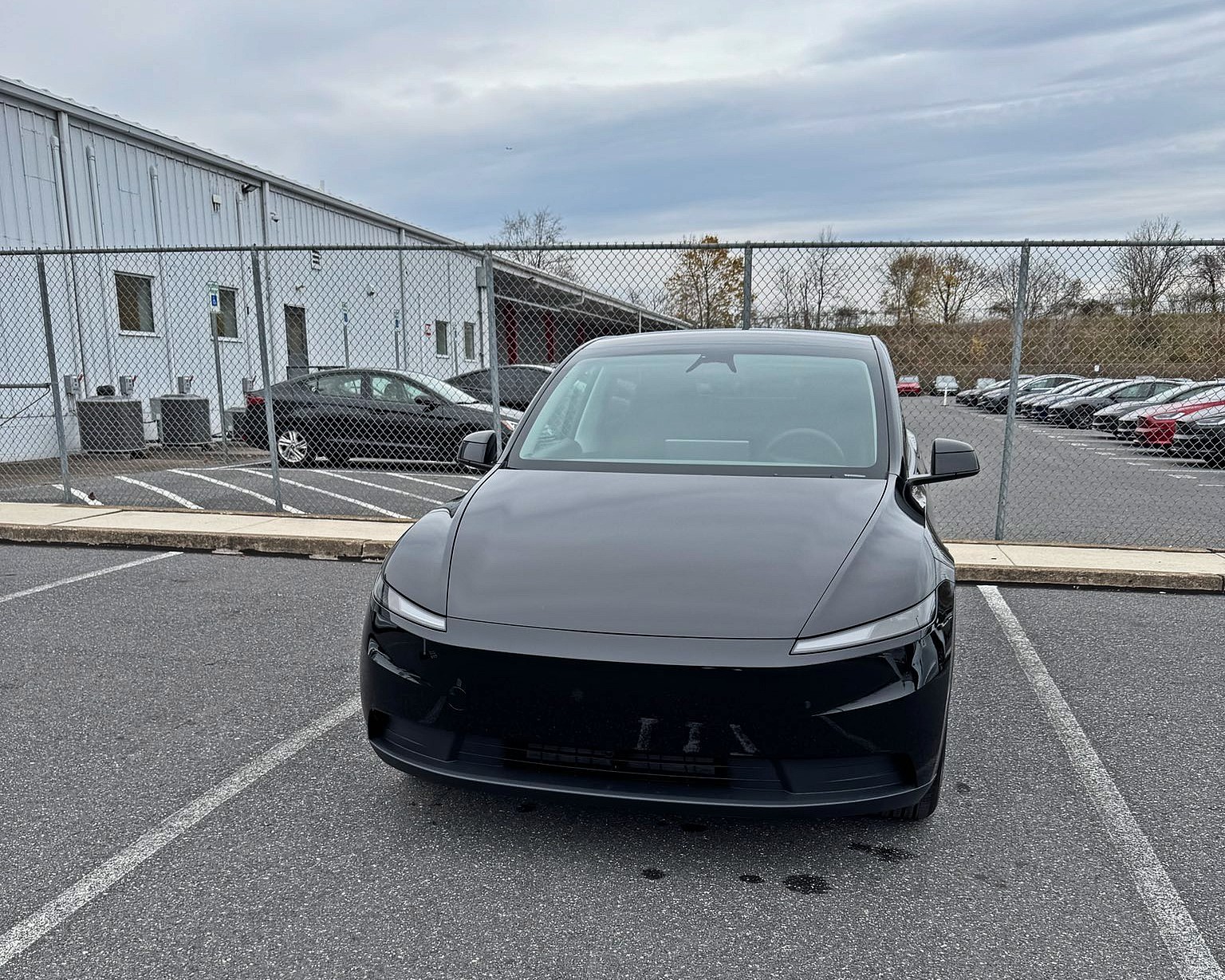
Tesla was nice enough to hook us up with the new Model Y “Standard” trim for a few days, and while we’ll be sure to fill you in on the full experience in the coming days, there are a lot of differences we noticed right off the bat, which make the ownership experience different from the “Premium” configuration level.
I purchased a Model Y Long Range All-Wheel-Drive back in August and took delivery just two weeks later. Through the first three months of owning my car, I’ve come to love so many things about the Tesla experience.
I traded my ICE vehicle for a Tesla Model Y: here’s how it went
However, I was interested in experiencing the affordable trim and seeing whether I would miss any of the voided features of the “Premium” Model Y.
Through the first 24 hours, here are my first impressions of the Model Y Standard as a Premium trim level owner:
Overall Aesthetic
The lack of a light bar is not something that is a dealbreaker. In fact, I would argue that the Model Y Standard’s more traditional headlight design is just as pleasing from an aesthetic standpoint.
The car is great looking from top to bottom; there are not a substantial number of differences besides the lack of a lightbar on both the front and the back of the car.
Overall, it is a very sleek vehicle, but the major changes are obviously with the interior.
Interior Changes
This is where the big differences are, and some of the things I’ve gotten used to in the Premium are not included. If I didn’t have a Premium Model Y already, I’m not sure I’d miss some of the things that are not present in the Standard trim, but I believe I’d get annoyed with it.
First impressions:
✅ Interior is excellent. I definitely miss the additional storage already that is available in my Premium. I could definitely get over it though
✅ Noticeable step down in sound system. Long Time by Boston absolutely cranks in the Premium; it’s still very… https://t.co/JNWvxTd8p1
— TESLARATI (@Teslarati) November 25, 2025
Storage
The Premium has a large storage compartment between the cupholders and the wireless charger, which is not present in the Standard trim. Instead, it is more like the Cybertruck, as there is a pass-through and floor storage.
I think that the pass-through is nice, but the additional storage is something I take advantage of, especially as someone who films Full Self-Driving videos, which requires hauling mounts, GoPros, and other accessories.
The sleekness of the Premium trim is also something I prefer; I really enjoy having the ability to close those compartments and cover the cupholders.
Obviously, this is a really trivial issue and not something that is substantially impactful from an ownership experience. If I weren’t already an owner, I am not sure I’d even have something to complain about.
Material Differences
The Premium trim seats are completely Vegan Leather, which I really do like, even as someone who doesn’t really love leather seats due to their temperature dependency.
The Standard trim features a Textile and Vegan hybrid, which has half of the seat a different material than the other.
The material is very similar to what I had in my previous car, a Bronco Sport. It was very durable, easy to clean, dried quickly, and hid a lot of things that leather does not, like oils from your skin, which constantly require attention to keep your interior looking fresh.
The wireless charger is also a different material, as the Premium features an Alcantara material on that. The Standard has a rubberized and textured backing, which looks good, too. They’re both more than suitable.
Other Missing Features
The Standard lacks a few minor things, most noticeably is the ambient lighting. The biggest change, however, and something I really miss, is the glass roof.
A lot of people told me that when I got my Model Y, I wouldn’t even notice the glass roof after a few weeks. That could not be further from the truth. I look out of it all the time, and it’s one of my family’s favorite parts of the car.
My Fiancè and I really love parking and watching Netflix when we pick food up, especially when it’s raining, because the glass roof gives such a great view.
We also loved it as Fall arrived, because it was great to look at the foliage.
Buy the Tesla.
Enjoy the glass roof. pic.twitter.com/r2GDyOEEWu
— TESLARATI (@Teslarati) October 28, 2025
Bigger Differences
There are also a handful of very noticeable differences from the overall cabin experience, especially with the sound system.
Much Weaker Sound System
The Model Y Standard has just 7 speakers and 1 amp, with no subwoofer. This is a significant step down from the 13-15 speakers in the Premium Long Range AWD Model Y, the 2 amps it comes with, and 1 subwoofer in the trunk.
I usually like to listen to Long Time by Boston to test out a sound system, and it was noticeably weaker in the Standard. It was missing a big portion of the umph that is provided by the Premium’s sound system.
Cabin Noise
It feels like the Cabin Noise is definitely more noticeable in the Standard, which is something I really love about my Model Y. It is able to dampen so much road noise from louder cars, and I don’t feel as if it is very quiet in the Standard.
This is perhaps the biggest make-or-break for me with this car. I truly have been spoiled by how quiet the cabin is in the Premium, and it’s due to the lack of acoustic-lined glass in the Standard.
I will be doing a more in-depth review of the Model Y Standard, especially with ride quality, later this week.
News
Tesla takes a step towards removal of Robotaxi service’s safety drivers
Tesla watchers are speculating that the implementation of in-camera data sharing could be a step towards the removal of the Robotaxi service’s safety drivers.

Tesla appears to be preparing for the eventual removal of its Robotaxi service’s safety drivers.
This was hinted at in a recent de-compile of the Robotaxi App’s version 25.11.5, which was shared on social media platform X.
In-cabin analytics
As per Tesla software tracker @Tesla_App_iOS, the latest update to the Robotaxi app featured several improvements. These include Live Screen Sharing, as well as a feature that would allow Tesla to access video and audio inside the vehicle.
According to the software tracker, a new prompt has been added to the Robotaxi App that requests user consent for enhanced in-cabin data sharing, which comprise Cabin Camera Analytics and Sound Detection Analytics. Once accepted, Tesla would be able to retrieve video and audio data from the Robotaxi’s cabin.
Video and audio sharing
A screenshot posted by the software tracker on X showed that Cabin Camera Analytics is used to improve the intelligence of features like request support. Tesla has not explained exactly how the feature will be implemented, though this might mean that the in-cabin camera may be used to view and analyze the status of passengers when remote agents are contacted.
Sound Detection Analytics is expected to be used to improve the intelligence of features like siren recognition. This suggests that Robotaxis will always be actively listening for emergency vehicle sirens to improve how the system responds to them. Tesla, however, also maintained that data collected by Robotaxis will be anonymous. In-cabin data will not be linked to users unless they are needed for a safety event or a support request.
Tesla watchers are speculating that the implementation of in-camera data sharing could be a step towards the removal of the Robotaxi service’s safety drivers. With Tesla able to access video and audio feeds from Robotaxis, after all, users can get assistance even if they are alone in the driverless vehicle.








